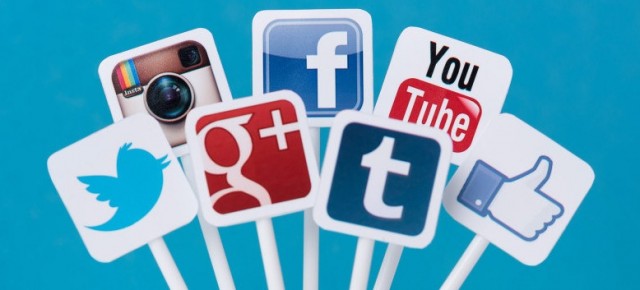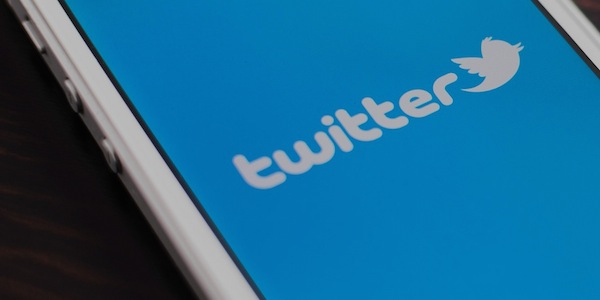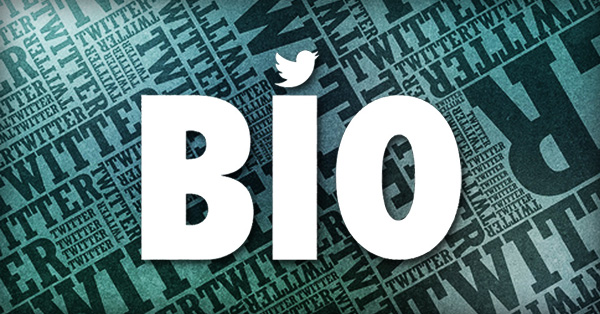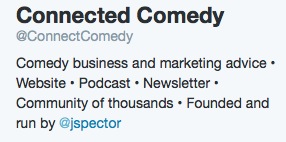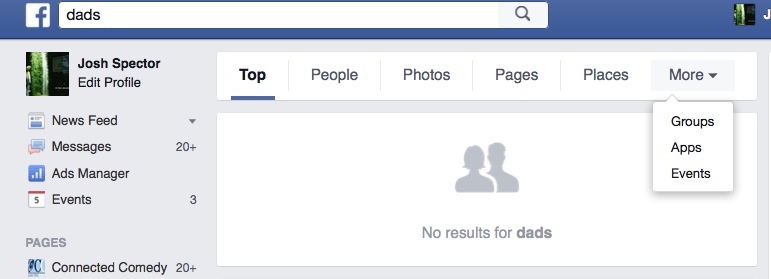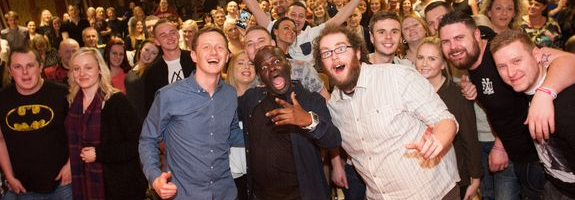There’s a lot of different ways to build a following online and use social platforms to attract new fans, but there are certain concepts that are universal and will help you succeed no matter what kind of content you’re producing and which platforms you’re focused on.
Here’s a breakdown of 10 general philosophies and guidelines that will help you get the results you want from the time you spend creating content and promoting yourself online.
1. Content Is Marketing
I talk a lot about the value of creating “content” and when I do I’m referring to content in the broadest form – that includes blog posts, videos, pictures, tweets, status updates, podcasts, standup material, etc.
But that value is not just limited to your own original content – I’m a big believer in the value or curating content as well. Here’s a post about curating that’s worth checking out.
The reason I’m such a believer in the importance of content creation is because it’s free marketing for you and your career.
Every single piece of content you create brings with it an opportunity for you to get found.
Each piece of content can be found through Google searches, can be shared and passed around by people on social media, and can introduce you to new fans at literally no cost. It’s an extremely powerful tool.
Plus, you can use content to target the exact audience you want to reach. For example, if you think parents, or sports fans, or fans of a certain comedian are likely to enjoy your work, then you can create content that is going to attract and appeal to those people and introduce them to your world.
But the thing to remember is that the more content you create, the more opportunities you have to attract fans.
2. Engagement Matters
As important as content is, engaging with your fans (and potential fans) may be even more important. Your content is the hook that draws people into your world, and your engagement with those people is the way you turn them into actual fans and get them to stick around.
One of the biggest misconceptions about social media (especially Twitter and Facebook) is that they’re mediums you primarily use to promote yourself and your stuff. That’s not true, but that’s what most comics do and why most comics don’t get any real results from social media.
Think about your own experience as a follower of somebody else on social media – I’m guessing you hate people who only promote themselves and you feel a genuine connection to people who interact with you and care about you, even if you’ve never met them face-to-face before.
Twitter, Facebook, and other social media platforms work best when you use them to engage with people. They’re connection tools, not promotional tools.
You want to use social tools to talk with people as opposed to talking at people. That’s a subtle, but important difference.
3. Be Personal. Be Informal. Be Available. Be Real.
Most comedians’ instinct is to position themselves as bigger and more successful than they are when they’re showcasing themselves on their website and social media channels. That’s a mistake.
Just be real.
People want to connect to other people and they want to relate to them – the more you’re willing to put yourself out there and be honest, the more people will connect to you. Real is always better than fake – in videos, in blog posts, on stage, in everything.
I also think it’s worth noting that this represents something of a generational shift. Back in the day, before technology like YouTube allowed literally everybody in the world to reach everybody else in the world, the average audience member assumed that the people who had broadcast power were better than them. They gave you the benefit of the doubt because they assumed if you were able to get to the point where you were given the chance to reach an audience, that you had some talent.
But now, when anybody can reach everybody, that has shifted and audiences are much more skeptical. Now, if they see you pretending to be bigger than you are, they resent it. You no longer have the benefit of the doubt.
But the flipside of that is that if you are real and allow fans to see you for where you’re really at in your career, those same people will rally behind you, support you, and want to help be a part of your journey to success. They will become invested in you.
A great example of this is the success of the YouTube musical group Karmin which I’ve written about here. You can learn a lot from how they broke on YouTube by being honest about where they were at in their career.
This idea also extends to your writing and your content. For example, your bio may be written in third person but is there anybody that actually believes you didn’t write it yourself? And, more importantly, does it really invite a would-be fan to connect with who you are or does it put them off because it makes it seem like you want them to know the “professional” you as opposed to the person that you are?
You want to make it easy for people to feel like they know you and can interact with you. Because the closer they feel to you, the more vested they become in your success.
On a side note, it’s fine to have a third-person “professional” bio that you may send to people who need it for their corporate gig brochures, etc. But, if you’re hoping to use your website to connect with fans then you want it to be as informal and friendly as possible.
4. The Quickest Path To Success Runs Through A Niche
It’s going to take time to build your fanbase even if you do everything right – that’s just something you need to understand going into it.
However, one way that you can give yourself a huge head start is to figure out a niche that you can appeal to.
Based on your material, life, interests, experience, and goals, you should try to figure out what kind of niche audience you might appeal to because it’s extremely hard to build a fanbase by just being another comic who is generally funny.
If you can focus on a niche – similar to the way Chris Hardwick has done with his Nerdist empire – you will find that all your marketing and content-related decisions become a whole lot easier.
When you have a niche that you’re targeting, you know exactly where to find potential fans because you can identify where else they gather – online or offline. It also allows people to rally around their shared interest in what you’re interested in, as opposed to solely trying to win them over with your jokes.
And of course, if they have a shared worldview to yours, they are more likely to enjoy your comedy in the first place.
There’s a couple other relevant articles about the importance of niche that you may want to check out including these lessons you can learn from Chris Hardwick and this guide to help you find your own niche.
5. Pay Attention To What You Engage With
One of the best ways to learn what works with people is to pay attention to what works when you’re the consumer. Start to think about what ads you click on, what websites catch your eye, what headlines get you to click, and what content you actually share with people.
When you start to think about what gets you to click something, or to take an action, you’ll be able to apply those same things to your own creations. It’s a great way to learn.
6. What People Share Is Not The Same As What They Click
You’ll create content for different purposes, but one broad thing to remember is that people share different kinds of content than they view. For example, porn sites get the most traffic on the web, but when was the last time somebody posted a link to a porn site on their Facebook wall?
People share things that are cute, funny, relatable, etc. But here’s another secret – people usually share things because it allows them to say something they want to say without actually saying it themselves.
People share things to show their support for a specific opinion or rallying cause. Sometimes, they will even share things they disagree with, just because sharing it gives them a chance to express their opinion about it. This is why strong viewpoints are always helpful in content.
This is something to keep in mind as you develop content – you want to use your expertise (in comedy and whatever else you may be knowledgable about) to express things that other people may believe but are not necessarily capable of saying as clearly (or in as entertaining a way) as you are.
7. Figure Out How To Provide Value
One of the most important overall questions for you to think about is how you can provide value to your fans. This goes beyond just being funny. Think about ways you can provide as much value as possible to your desired audience, whether it’s with your own content or not.
For example, on Connected Comedy I provide value to my audience by posting free articles with advice that can help them with their careers. On JoshSpector.com, I provide value to my readers by scouring the web to give them interesting videos to see and links to other cool stuff on the web. The “value” I provide is that I save them the time of having to look for cool stuff.
There’s no one way to provide value to your fans, and you’ll likely come up with multiple ways to do it.
A great way to get started is to combine your ability to be funny with a certain expertise you may have. The way you do this will be different for everybody, but in general the more value you provide, the more you get in return and the easier it is to grow an audience.
8. What’s In It For Your Audience?
With everything you do, try to think about what’s in it for your audience first. It’s too easy to fall into the trap of thinking about what you want them to do for you, but you’ll have more success if you think in terms of what you can do for them.
I had a conversation with a big-name headlining comic once and he was frustrated with having to post on social media all the time.
“It feels like I have to work for my fans,” he said. “Like I’m working for them!”
He was disgusted by that concept, but that’s exactly correct (and why he does a bad job at social media).
Your fans are your employer. Not the bookers, not the clubs, not the Hollywood execs, the fans. Because if you have enough fans…none of those other people matter.
9. Experiment Often
Because all of this is so personal, it will take you some time to experiment and find what works best for you. It’s important to understand that before you go into it, because too many people get frustrated quickly and give up.
Comics understand it could take 10+ years to get good on stage, but too often assume they’ll be social media experts after 10 minutes. They’re wrong.
By experimenting with different types of content and different ways to use social media, you’ll start to hone in on what works for you and see results.
Another thing about experimentation is to understand the best thing about failing online – when you fail, nobody really sees what you did anyway. Here’s a post that touches on that which is worth checking out.
10. Have A Goal
It’s very important to have a clear goal for what you’re hoping to get out of your activity online because that will ultimately influence everything you do.
For example, is the goal to attract new fans? Is the goal to attract new corporate gigs? Is the goal to create new properties/brands that can lead to new opportunities for books, TV, etc.?
Most likely you’ll want to do multiple of these things which is what will ultimately happen in success, but it’s worth thinking about what one goal is most important to you and letting that dictate your strategy.
11. Recognize The Opportunities You Have
If somebody would have approached comedians 20 years ago and offered them the opportunity to have their own TV show, radio show, or magazine with no cost, comics would have freaked out at what an amazing opportunity that is.
But that’s exactly the opportunity you have now and most comics are too lazy to actually take advantage of it.
Don’t get distracted by the “digital” aspects of all this. Just think about what you’d ultimately want to create and use these digital tools to reach the masses.
READ THIS NEXT: A Business Plan For Comedians


